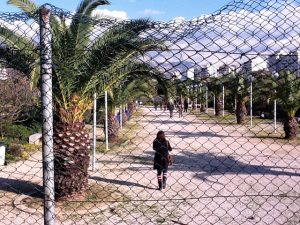
Artificial islands are sinking in the mire: Dubai has to face new environmental woes that come with “progress.”
When one thinks of Dubai shopping, economic prowess and cleanliness come to mind. While all three have become staples and synonymous with the Gulf city, the environmental toll that has been unleashed as a result is beginning to force government officials to take note. The city’s energy output, in order to turn sewage into fresh water, pump electricity into houses and the need to keep all the grand edifices running smoothly, is being hampered now by the environmental degradation that has come in its place. Officials are now worried that without action, Dubai could face major problems in the near future.
“We are looking at how to keep our status as a top city and at the same time incorporate solid environmental practices into the city’s development,” Abdallah Abdel Razek, a government planner, told Bikya Masr.
Around the region, other countries are attempting to build similar cities, but it isn’t going well. Qatar is another of those places that shines in the Arab world in terms of development, but a recent study by the Arab Forum for Environment and Development (AFED) reported that Qatar has the largest per capita output of carbon emissions. Not good for a region struggling with the environment.
Water in the desert is a tough situation facing Dubai. According to the government, it desalinates four billion liters of water daily. Desalination processes produce massive amounts of carbon emissions and is making Dubai one of the world’s largest carbon footprint cities.
The Gulf, a major source of water for the region, has seen its salinity rise to 47,000 parts per million, up from 32,000 only three decades ago, The Economic Times reported. Those levels, say environmental experts, are a major threat to marine and land life, including vital ecosystems.
“What we are witnessing is a turning point for Dubai and other places in the Gulf,” Adam Rison, an environmental consultant for the European Union, told Bikya Masr. He said that without concerted action to at least curtail the current carbon levels, “the region could face a rapid decline of ecosystems that would threaten the very existence of human populations.”
For the government, it is a thin line between sustainability and maintaining its status as a glitzy, skyscraper filled city that has attracted numerous large corporations and firms to the Gulf. The question now, said Abdel Razek, “is whether we can bridge development with sustainable practices. I think we can.”
Read more on ungreen Dubai:
Islands Smell Foul In Dubai
Coastal Erosion Threatens Evolutionary Hotspots In Gulf Region
Durrat Al Bahrain Artificial Islands – “A Place Like No Other”
Mega Urban Developments In Gulf Region A Natural Disaster Waiting to Happen
This story is reprinted courtesy of Bikya Masr.



